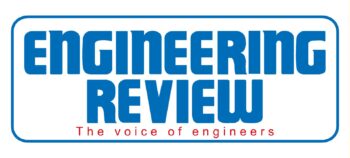
Author: Engr. Syed Fakhar Sultan
B.Eng. (Mechanical) NED University of Engineering and Technology, Karachi. MSc Building Services Engineering, Brunel University, London. Position: Researcher, IJS Research Center.
Abstract
Jet impulse fan ventilation systems, originally developed for tunnel ventilation, have been widely adopted in basement car park designs due to low ceiling height constraints and perceived cost advantages. However, growing awareness of their health risks, operational limitations, and fundamental design flaws necessitates their complete elimination from such applications. This article reviews their history, operating principles, health implications with WHO/IARC references, comparative performance, and exposure risk calculations, and proposes a safer, scientifically validated design approach based on low-level and high-level ducted extraction systems.
1. Introduction
Effective ventilation in basement car parks is critical to maintaining indoor air quality, protecting occupant health, and ensuring compliance with fire and life safety standards. Although jet impulse fans have become a widespread design choice, their suitability warrants serious reconsideration when assessed against fundamental ventilation engineering principles, exposure science, and occupant health protection guidelines.
2. Historical Background
Jet impulse fan technology originated in Europe during the 1960s-1970s for tunnel ventilation, where installation of horizontal ducts was impractical due to long confined geometries. Their primary purpose was to push smoke and exhaust fumes along tunnels to extraction shafts. In tunnels, occupants generally remain inside vehicles, limiting direct inhalation of contaminated air.
In the early 1990s, manufacturers such as Fläkt Woods and Colt International introduced jet fans for basement car parks in Germany and the UK to address low ceiling heights and reduce ductwork installation costs. Over time, this cost-driven solution became the default practice without re-evaluation of its fundamental suitability for enclosed environments where occupants are directly exposed while walking or working.
3. Principles of Jet Impulse Fan Operation
Jet fans do not extract pollutants themselves. They create high-velocity air jets that entrain surrounding air, pushing it towards exhaust risers with extraction fans. Their performance depends on correct placement, thrust alignment, system balancing, and continuous maintenance to avoid stagnant pollutant zones. Fundamentally, they redistribute polluted air rather than remove it directly from the space.
4. Pollutant Toxicology and WHO/IARC Exposure Standards
4.1 Key Pollutants in Vehicle Exhaust
| Pollutant | Source in Vehicle Exhaust | IARC Classification | Health Effects | WHO Exposure Limit |
| Carbon Monoxide (CO) | Incomplete combustion | Not classified as carcinogen | Hypoxia, headache, dizziness, death at high levels | 10 mg/m³ (9 ppm) 8-hour mean |
| Benzene | Unburned fuel components, combustion byproduct | Group 1 (carcinogenic to humans) | Leukemia, blood cancers | As low as possible; EU: 0.1 mg/m³ annual mean |
| Formaldehyde | Combustion byproduct, fuel additives | Group 1 (carcinogenic to humans) | Nasopharyngeal cancer, leukemia, respiratory irritation | 0.1 mg/m³ 30-minute mean |
| Diesel Particulate Matter (DPM) | Diesel engine combustion | Group 1 (carcinogenic to humans) | Lung cancer, respiratory diseases | No WHO guideline; EU occupational limit: 0.05 mg/m³ |
| Nitrogen Dioxide (NO₂) | High temperature combustion | Group 2A (probably carcinogenic to humans); strong respiratory toxicant | Lung irritation, reduced function, asthma aggravation | 25 µg/m³ annual mean; 200 µg/m³ 1-hour mean |
| Polycyclic Aromatic Hydrocarbons (PAHs) | Incomplete combustion | Some PAHs Group 1 carcinogens (e.g. benzo[a]pyrene) | Lung, skin cancer, DNA damage | 1 ng/m³ annual mean for benzo[a]pyrene |
| Sulphur Dioxide (SO₂) | Combustion of sulphur fuels | Not classified as carcinogen but toxic | Respiratory irritation, bronchoconstriction | 20 µg/m³ 24-hour mean |
4.2 Indoor Air Quality Guidelines (ASHRAE, OSHA, CIBSE)
| Pollutant | ASHRAE Guideline | OSHA PEL | CIBSE Guidance |
| Carbon Monoxide (CO) | 9 ppm (8-hr avg) | 50 ppm (8-hr TWA) | Maintain below 30 ppm peak; 9 ppm recommended |
| Benzene | No specific | 1 ppm (3.2 mg/m³) TWA | As low as possible |
| Formaldehyde | 0.1 ppm (0.12 mg/m³) | 0.75 ppm TWA | Maintain below 0.1 ppm |
| Diesel Particulate | No specific | 3 mg/m³ (total particulates) | Minimise exposure; no safe level |
| Nitrogen Dioxide (NO₂) | 0.053 ppm (100 µg/m³) annual avg | 5 ppm ceiling | As low as possible |
| PAHs | No specific | Varies by compound | Minimise exposure; no safe level |
| Sulphur Dioxide (SO₂) | 0.5 ppm | 5 ppm TWA | As low as possible |
5. Exposure Risk Calculation Example
Assumptions
- Average vehicle idle exhaust CO: 400 ppm
- Car park volume: 10,000 m³
- Ventilation rate: 6 ACH (both systems)
- Number of vehicles idling simultaneously: 10
Scenario 1: Jet Fan System
- Redistribution only, no direct extraction.
- Effective CO removal efficiency: 30-50%
- Estimated CO concentration:
(400ppm×10cars×50(400 ppm × 10 cars × 50% inefficiency) / 10,000 m³ = ~20 ppm(400ppm×10cars×50
This exceeds WHO/ASHRAE guidelines (9 ppm 8-hour mean).
Scenario 2: Low-Level + High-Level Ducted Extraction
System characteristics
- Low-level extraction: Removes CO, diesel particulates, benzene, formaldehyde, PAHs near emission height (>90% efficiency).
- High-level extraction: Removes lighter gases (e.g. NO₂) and hot gases (>90% efficiency).
Estimated concentrations
- CO:
(400ppm×10cars×10(400 ppm × 10 cars × 10% inefficiency) / 10,000 m³ = ~4 ppm(400ppm×10cars×10
- NO₂:
Without high-level extraction: ~30-50 µg/m³
With high-level extraction (90% efficiency): ~3-5 µg/m³
Both are well within WHO and ASHRAE guidelines.
Summary Table
| Scenario | System Type | CO Concentration | NO₂ Concentration | Compliance Status |
| 1 | Jet fans only | ~20 ppm | ~50 µg/m³ | Exceeds WHO/ASHRAE limits |
| 2 | Low-level + high-level ducted extraction | ~4 ppm | ~3-5 µg/m³ | Within WHO/ASHRAE limits |
6. Technical Limitations of Jet Impulse Fans
- Do not provide direct pollutant removal; redistribute contaminated air within breathing zones.
- Carbon monoxide and heavier pollutants remain concentrated without low-level extraction.
- Even with CFD validation and ideal placement, they cannot overcome this fundamental limitation.
- Emergency smoke ventilation performance is unpredictable; risk of pushing smoke into escape routes.
- Dependent on ongoing maintenance, which often declines over time, reducing effectiveness.
7. Recommended Safer Design Strategy
A comprehensive ducted extraction system should replace jet fans, consisting of:
- Low-level ducted extraction for CO, diesel particulates, benzene, formaldehyde, and PAHs at emission source.
- High-level ducted extraction for lighter gases (NO₂) and hot smoke during fires.
- Separate exhaust systems for daily ventilation and emergency smoke extraction to maximise reliability.
- Pressurisation systems for escape routes and staircases to prevent smoke ingress.
- Regular maintenance and indoor air quality monitoring to ensure continuous compliance with design intent and health guidelines.
8. International Best Practices
ASHRAE, CIBSE, and WHO recommend direct pollutant removal at source to minimise occupant exposure. Hybrid systems combining jet fans for smoke with ducted extraction for daily ventilation exist, but reliance on jet fans alone is discouraged due to their inability to provide direct extraction, a core engineering requirement for indoor air safety.
9. Strategic Position: Discontinuation of Jet Impulse Fans
Based on this technical review:
- Jet impulse fan systems should be discontinued for basement car park ventilation, including for emergency smoke extraction.
- Their design limitation of no direct pollutant removal cannot be resolved by CFD validation or improved fan arrangements.
- They pose significant health hazards by recirculating carcinogens within breathing zones.
- Tunnel ventilation assumptions are inapplicable where pedestrians are exposed in confined indoor car parks.
- Low-level and high-level ducted exhaust systems are safer, reliable, and aligned with engineering ethics prioritising occupant health.
10. Conclusion
Jet impulse fans, initially introduced as a tunnel solution, became widespread in car parks without adequate consideration of their limitations in spaces with direct human exposure. Their continued use conflicts with WHO and IARC guidelines for cancer risk reduction and violates the fundamental ventilation engineering principle that effective systems must remove pollutants rather than redistribute them.
For occupant health, safety, and design compliance, it is recommended to discontinue jet impulse fan systems entirely in basement car park ventilation designs and adopt comprehensive low-level and high-level ducted extraction systems supported by fresh air supply and escape route pressurisation.
References
- IARC Monographs on the Evaluation of Carcinogenic Risks to Humans, WHO.
- WHO Air Quality Guidelines, 2021 Update.
- ASHRAE Handbook – HVAC Applications, Parking Garages.
- CIBSE Journal, March 2006: Jet Fans for Car Park Ventilation.
- Fläkt Woods Technical Papers: Impulse Ventilation Systems for Car Parks.
Building and Environment Journal, 2008: Indoor Air Quality in Underground Car Parks.
